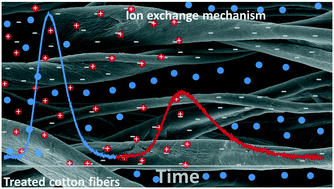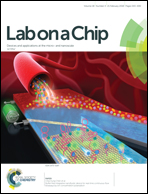Microfluidic thread based electroanalytical system for green chromatographic separations†
Abstract
The use of miniaturized chromatographic systems is an important strategy for reducing the consumption of supplies related to separations, allowing the development of more sustainable analytical methodologies. However, the high cost and complexity in the production of these systems combined with the operational difficulties and the need for the use of solvent and sample pretreatment are challenges to be overcome in order to make the chromatographic methods greener. Here, we report the construction and development of a low cost microfluidic system for green and solvent-free chromatographic separations with electrochemical detection integrated into cotton threads without the use of any mechanical pumping to transport the solutions. The manufacture of the proposed system was performed by simple assembly of the components, with the separation of the species based on an ion exchange mechanism and detection using gold electrodes manufactured directly on the cotton threads. A linear range of 0.025–5.0 mM was obtained for the effective separation of ascorbic acid (AA) and dopamine (DA) with detection limits of 2.89 μM (for AA) and 4.41 μM (for DA). Each analysis was performed at a low cost (less than 0.01 dollars), and with a small volume of waste generated (107.1 μL). So, the proposed system was successfully employed to determine the levels of AA and DA present in the tears of healthy volunteers without sample pretreatment, indicating the good analytical performance of the system and the possibility of performing greener chromatographic separations.



 Please wait while we load your content...
Please wait while we load your content...